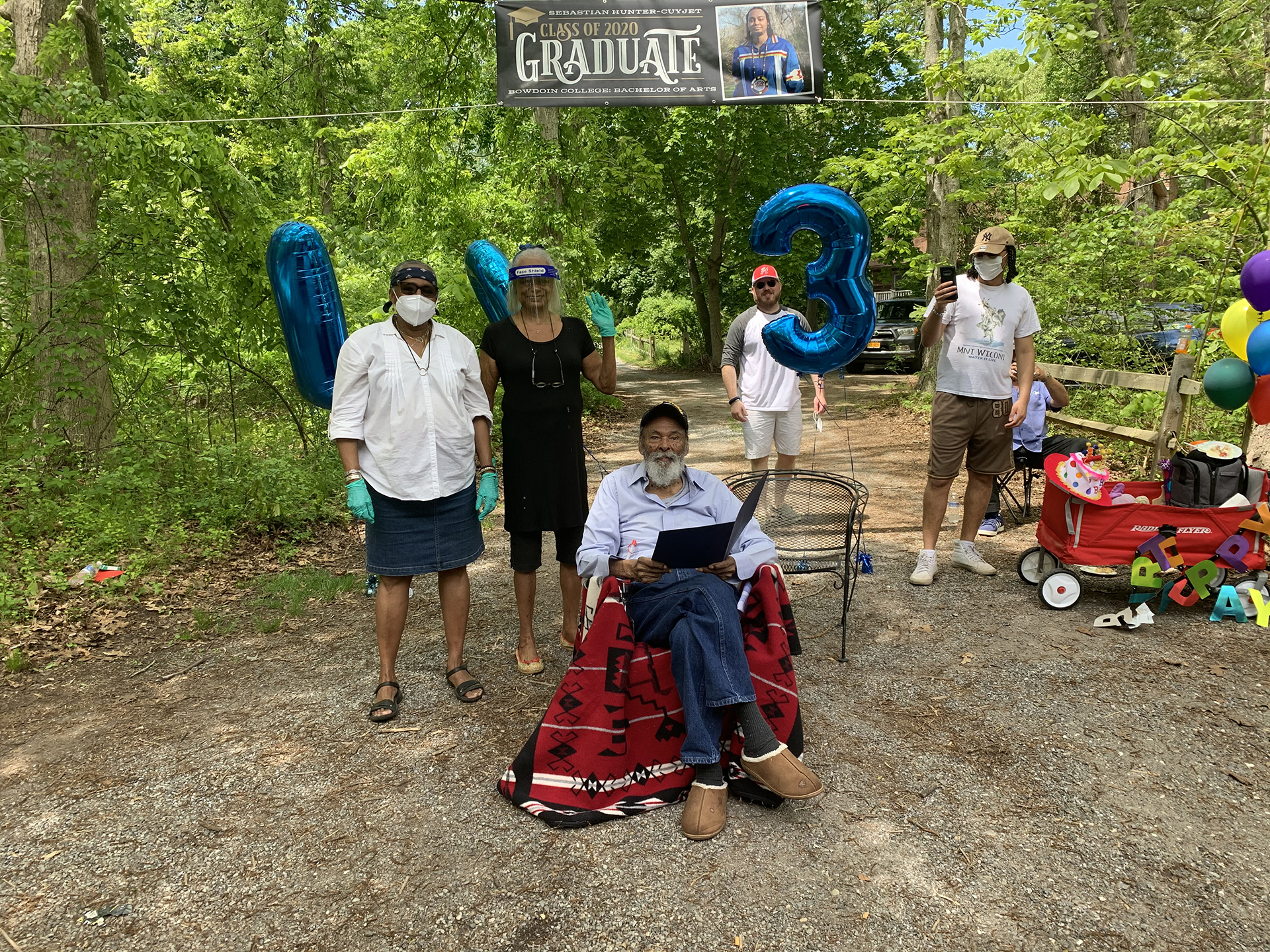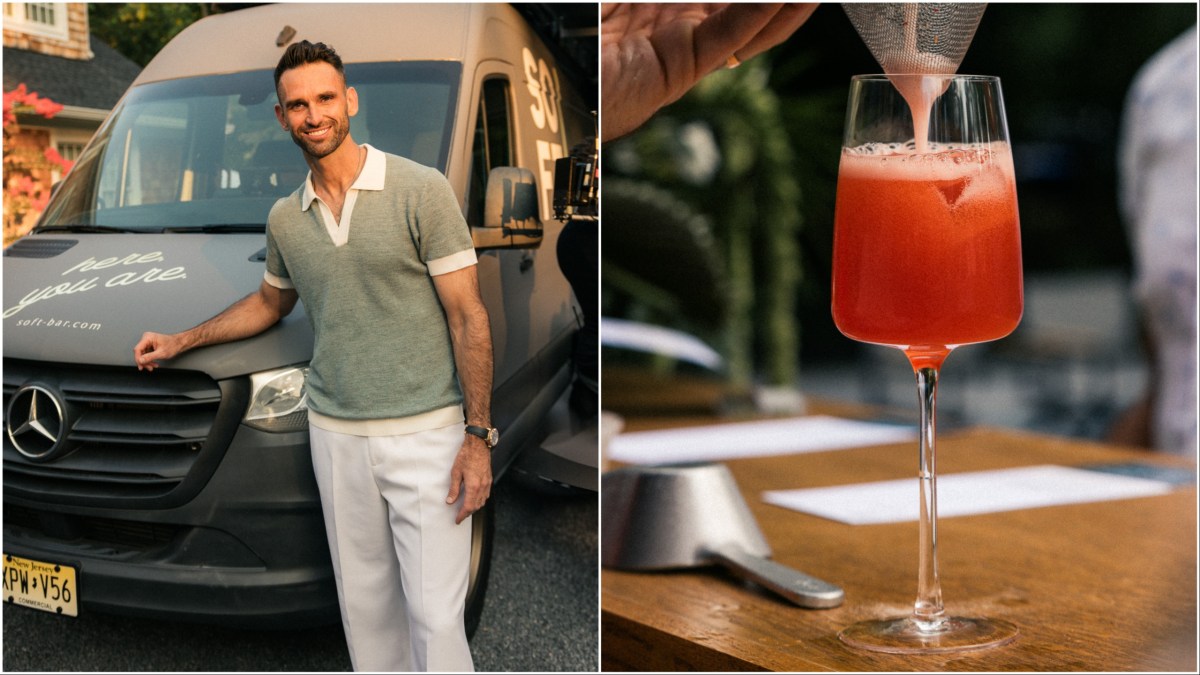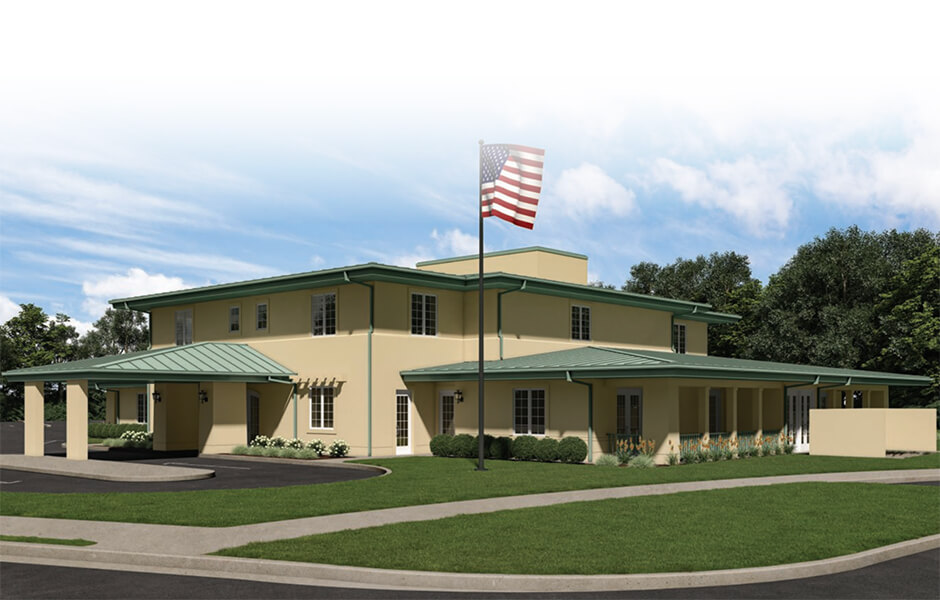Oldest Shinnecock Man Turns 103 Years Old

Lubin Walter Hunter, the oldest living member of the Shinnecock Indian Nation and oldest living male veteran in the Town of Southampton, according to a Southampton Village proclamation, turned 103 last week. In fact, Hunter may just be the eldest Native American veteran in New York, his family said.
In the midst of the novel coronavirus pandemic, his family did not want to pass up the opportunity to celebrate his accomplished life and longevity, organizing a drive-by parade with his friends and community members. Hunter sat regally in a chair, draped with a blanket, at the end of his driveway, surrounded by his children and grandchildren — who wore masks and gloves to protect him from COVID-19. He stoically took in the well wishes one by one as the procession passed by.
Shinnecock Nation public safety vehicles led the way, followed by the Southampton Fire Department, which turned out in force with many of its antique trucks. As Chief Anthony Stevens presented Hunter with a proclamation from Southampton Village, he told him it is “honoring you for 103 years of living. And, tell you what, you deserve every bit of it!”
“He loved the celebration and was so surprised by the turn out and love,” his granddaughter Sienna Hunter-Cuyjet said. His family streamed it live on Facebook for other family members who could not attend.
Hunter was born on the Shinnecock Reservation on May 28, 1917. His mother, Marianne, was a domestic worker and his father, Walter Lubin, who worked as a gardener and laborer on several wealthy East End properties, served in World War I with his citizenship listed as “alien friendly to the United States.” American Indians were not even granted U.S. citizenship until Hunter was seven years old.
He was educated in a one-room schoolhouse, before going to Southampton High School. He left following graduation in 1936 to attend college. He worked as a “shipper and corker” on both the USS Iowa and the USS Missouri battleships in the Brooklyn Navy Yard. He served as a navigator gunner on B-17s with the Army Air Corps — before there was the Air Force — in the Pacific Arena.
His military records list service from 1938 to 1946, with active duty from 1943 to 1946. He was listed as white, as there was no category for Native Americans.
When he returned from war, he went to Brooklyn College on the GI Bill and earned a bachelor’s degree in 1953 while working as a social worker. His granddaughter said he was denied housing in the newly-established suburb of Levittown, built for returning veterans and their families, due to segregation. He was still able to use the GI Bill to get a mortgage for his first house in the Baisley Park section of Jamaica, Queens, she said.
For most of his career, he worked with the New York Housing Authority, in management, and oversaw the public housing in Queens and Brooklyn. He advocated for fair and adequate housing for low socioeconomic communities. He retired in 1973, but soon took a job with the Internal Revenue Service in Manhattan until the 1980s.
He and his wife, Elaine, raised four children in Queens, having later moved to Springfield Gardens. They eventually moved to Hempstead, and spent summers on the Shinnecock Reservation, where they had planned to retire. They were building a house when he was widowed in 1987. He now has eight grandchildren, seven great grandchildren, and two great-great grandchildren.
He became an elder at the Shinnecock Presbyterian Church, serving as director of the Senior Nutrition Program, and was also elected a member of the Shinnecock Tribal Council, serving as a chair on the health committee and on the advisory board for the Shinnecock Family Preservation Center.
His family said he also proudly helped with Southampton Village’s annual Fourth of July parade for well over a decade, lining up floats, bands, and marchers.
Hunter, who learned how to play golf while caddying at Shinnecock Hills Golf Club as a teen, loved the sport and played well into his 90s, even competing in senior tournaments — and winning – and was often found walking the course. He was the founder of the Shinnecock Golfers Association, made of Shinnecock men who might not otherwise be allowed to play on certain courses. The association also provides scholarships, community service opportunities, and sponsors family events and activities.
“He wasn’t ever an in-your-face person, but more of a thoughtful agent of change who looks at things systematically,” Hunter-Cuyjet said. “He always tells us to stand with civility and respect in the face of discrimination and discord.”
taylor@indyeastend.com



